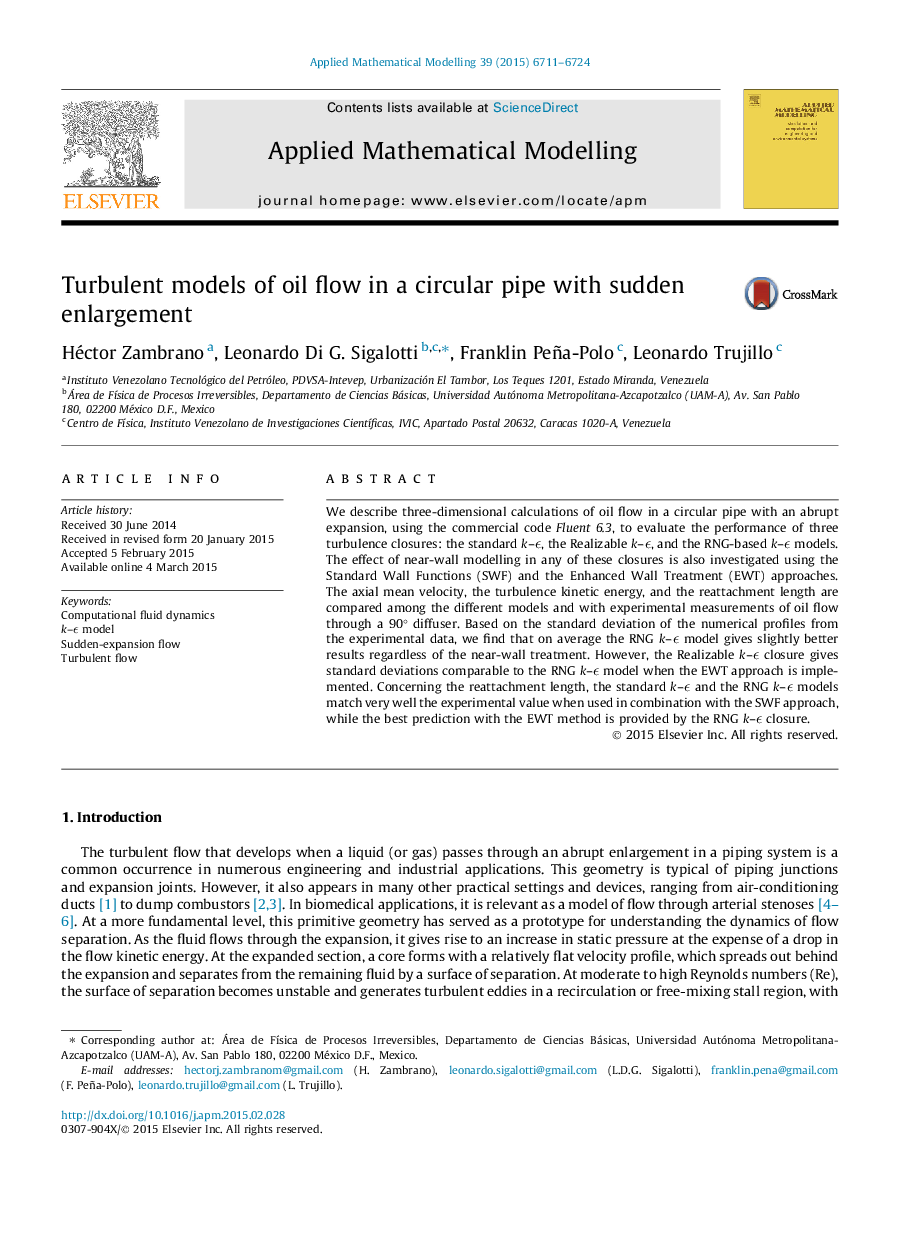| Article ID | Journal | Published Year | Pages | File Type |
|---|---|---|---|---|
| 1703084 | Applied Mathematical Modelling | 2015 | 14 Pages |
We describe three-dimensional calculations of oil flow in a circular pipe with an abrupt expansion, using the commercial code Fluent 6.3, to evaluate the performance of three turbulence closures: the standard k –∊∊, the Realizable k –∊∊, and the RNG-based k –∊∊ models. The effect of near-wall modelling in any of these closures is also investigated using the Standard Wall Functions (SWF) and the Enhanced Wall Treatment (EWT) approaches. The axial mean velocity, the turbulence kinetic energy, and the reattachment length are compared among the different models and with experimental measurements of oil flow through a 90° diffuser. Based on the standard deviation of the numerical profiles from the experimental data, we find that on average the RNG k –∊∊ model gives slightly better results regardless of the near-wall treatment. However, the Realizable k –∊∊ closure gives standard deviations comparable to the RNG k –∊∊ model when the EWT approach is implemented. Concerning the reattachment length, the standard k –∊∊ and the RNG k –∊∊ models match very well the experimental value when used in combination with the SWF approach, while the best prediction with the EWT method is provided by the RNG k –∊∊ closure.
